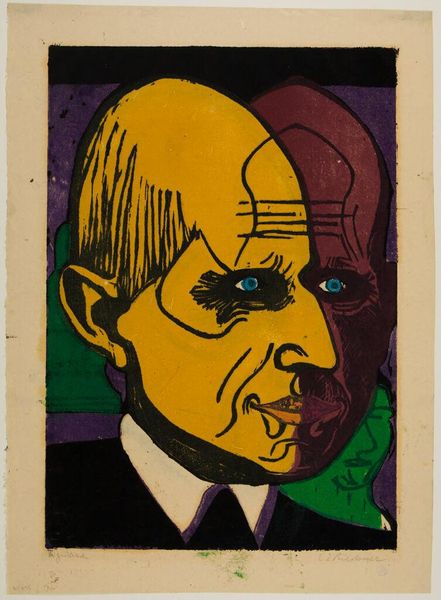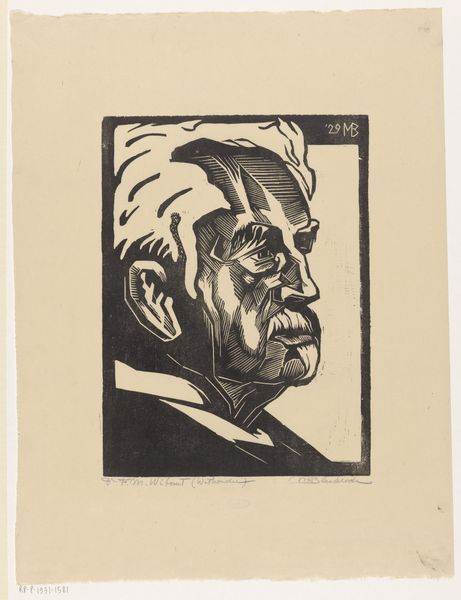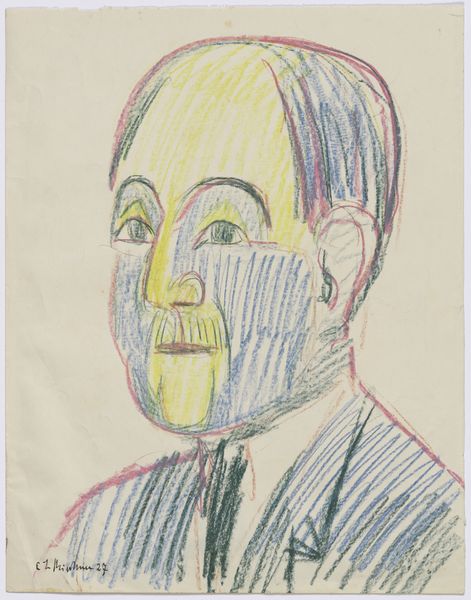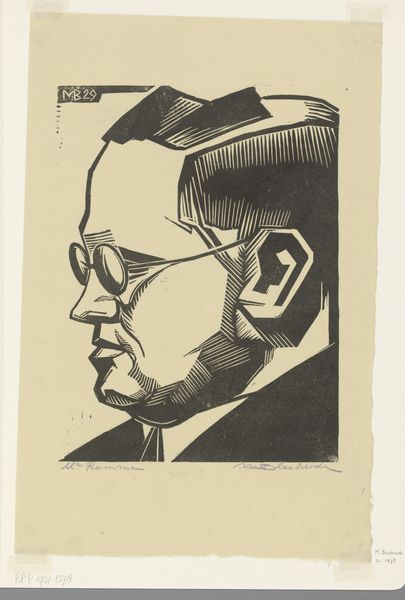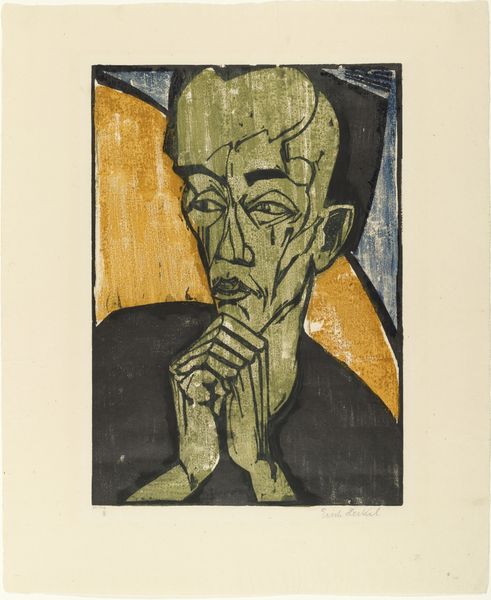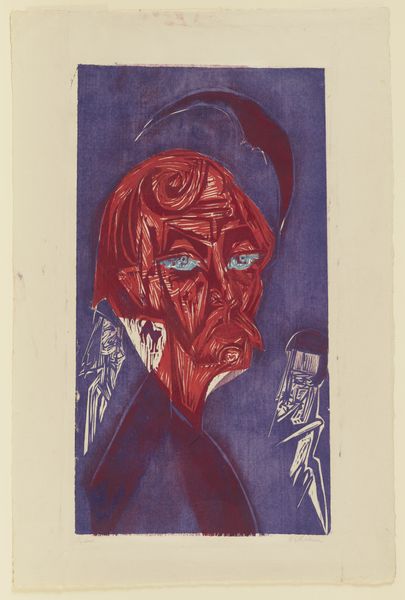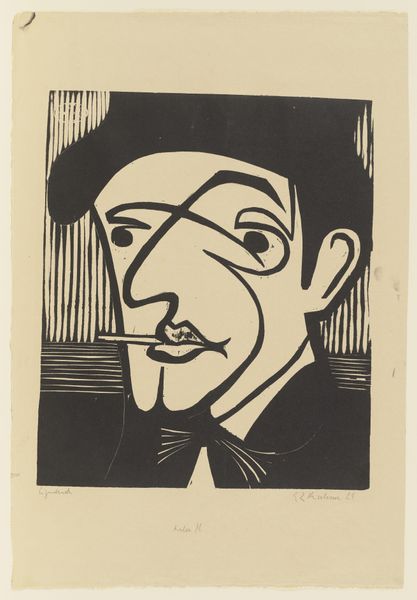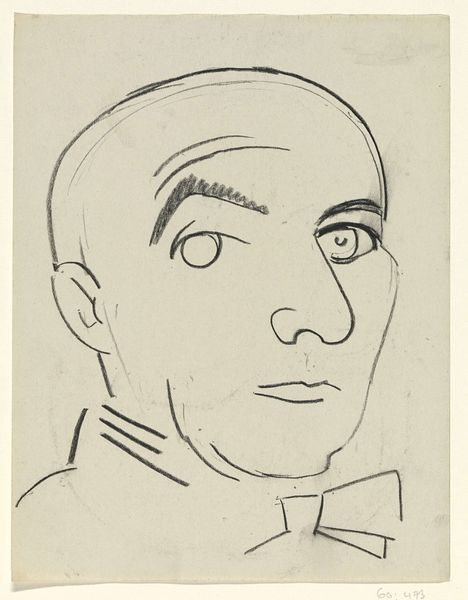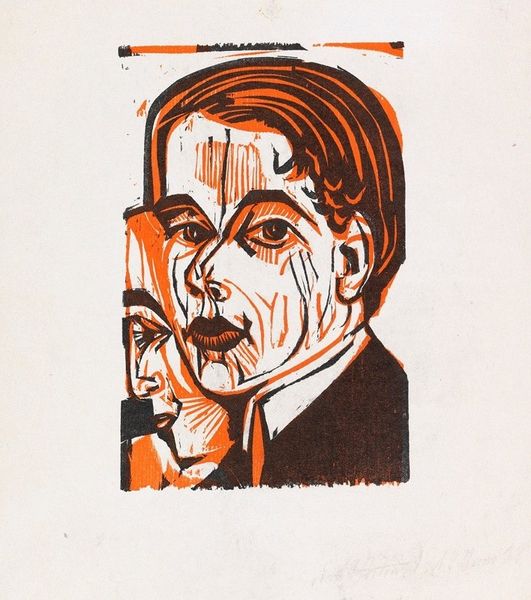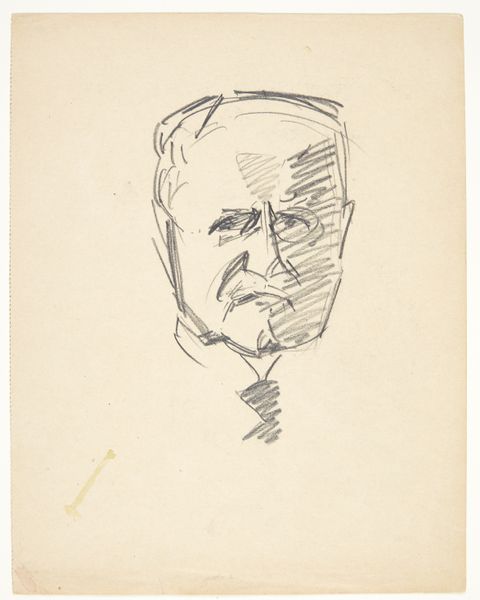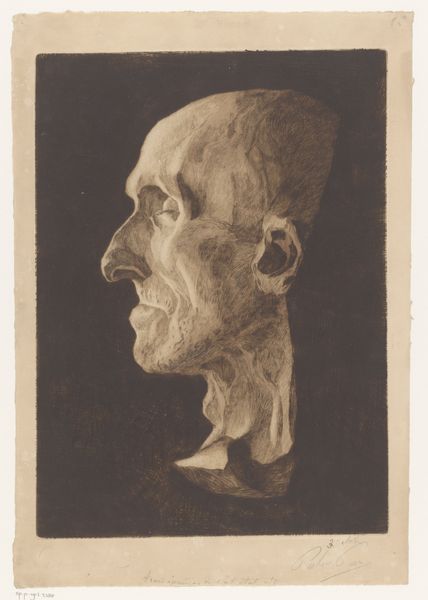
Copyright: Public Domain
Editor: Good morning. Look at this piece; there's a disquieting energy. The abrupt color shifts almost cleave the subject in two. Curator: Indeed. This is Ernst Ludwig Kirchner's 1933 drawing, "Kopf Dr. Frédéric Bauer," currently residing here at the Städel Museum. Note how Kirchner utilizes sharp linework. Editor: It appears to be a drawing, though it mimics printmaking's graphic qualities. I'm curious about Kirchner's material choice here; paper itself becoming part of the statement. Was this choice due to available materials, or a deliberate move in exploring print aesthetics? Curator: Both are valid considerations. But notice the deliberate composition choices. The subject, presumably Dr. Bauer, is bisected tonally; it creates a stark contrast which amplifies the expressionistic distortion, moving the representation from accurate portraiture towards raw emotional articulation. Editor: True. And I wonder about the physical act; Kirchner's hand wielding the drawing tools, his posture, his concentration. This work wasn’t effortless—each mark, color choice represents time spent, a decision made with both intention and perhaps also improvisation dictated by material realities. How do the social and economic conditions of 1933 inform these aesthetic choices? Curator: Your perspective highlights a deeper engagement with the process. Let’s observe further—the intense gaze achieved through simplified forms and that unsettling color palette contributes to a powerful psychological impact. The lines serve as contours defining shape and also independent agents that energize the composition. Editor: Absolutely. And by choosing drawing, a relatively accessible medium, rather than, say, large-scale painting, Kirchner engages directly with the notion of democratic art making. Materials become tools not only for artistic creation but instruments for social commentary as well. Curator: It appears the seemingly raw and fractured presentation encapsulates the psychological climate of its time. The stark simplicity forces the viewer to confront the fragmented reality it presents. Editor: Thinking about how readily-available, everyday materials were transformed into this forceful image only deepens its resonance for me. This is so much more than simply depicting a likeness; it is an indictment realized via modest means. Curator: Yes, there is a visual poignancy as the technique of drawing intersects with socio-historical reality here. Thank you for these additional material observations.
Comments
No comments
Be the first to comment and join the conversation on the ultimate creative platform.
